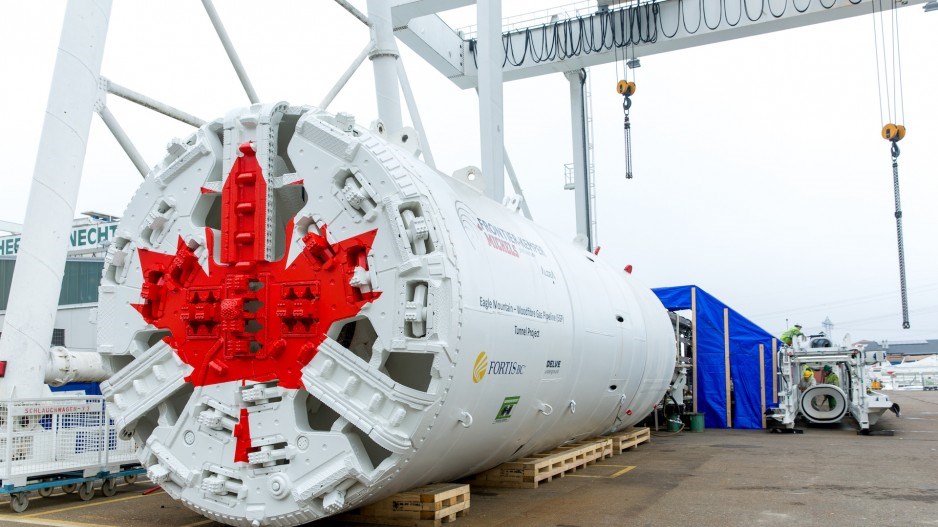FortisBC has submitted an application to the BC Energy Regulator (BCER) to discharge water created at two Squamishsites as a result of the construction of its tunnel, which is part of the Eagle Mountain-Woodfibre Gas Pipeline Project.
The two sites are at the Woodfibre LNG property on Howe Sound and the BC Rail site.
At Woodfibre, treated water will be released into East Creek, and then into Howe Sound.
At the BC Rail site, the treated water will flow into Squamish River through an existing storm sewer system.
The permit, once approved, would be active throughout the tunnel process, so up to three years.
Currently, the public can comment on the application submitted to the BCER, an agency that regulates oil and gas and geothermal development in the province.
BCER's board reports to the B.C. Minister of Energy, Mines and Low Carbon Innovation Josie Osborne.
Water is treated
So, is this polluted water they are talking about going into our vital waterways?
FortisBC says no.
Treatment plants will clean the water FortisBC uses both for its operations at the BC Rail location and at the WoodfibreLNG site.
"We've engaged experts to create this robust treatment system and testing program," said Jessica Skjeveland, corporate communications advisor for FortisBC.
"Both [sites] use the same processes to ensure water is treated, cleaned and meets B.C. water quality guidelines before being released into the environment."
The plant has an automated system that stops any flow of water the second any regularity is detected, she added.
"Another part of the program and system is, as an additional safeguard, we will be also monitoring water quality in the Squamish River, where the treated water will flow into. So, we'll be able to verify that there's no negative impact in the Squamish River."
Why is there water?
But wait, why is water involved in the tunnel construction process at all?
There are lots of reasons construction projects create or use water.
Water is used to cool the FortisBC tunnel boring machines during operation, for example.
At the BC Rail site, water is also a key ingredient in a liquid slurry (mixture) used by the boring machines to transport the excavated materials back to the surface.
"After use, the water will be separated from this mixture and treated to ensure it’s clean before being released into the natural environment," Skjeveland said.
Water is also used for other purposes, such as drilling and cleaning equipment.
Where will the water come from?
At the BC Rail site, FortisBC will get water from a well that has been drilled near the site, which they have a short-term water use permit for.
At the Woodfibre LNG site, the water will be supplied by Woodfibre LNG.
Water will also naturally enter the tunnel during the excavation process, as groundwater inflow.
Public comment about this application can be submitted until Dec. 29, via email to [email protected], with a copy to the energy regulator: waste.management@bc_er.ca.
(Letters will become part of the public record.)
The regulator will then consider the comments and make a decision on the permit.




